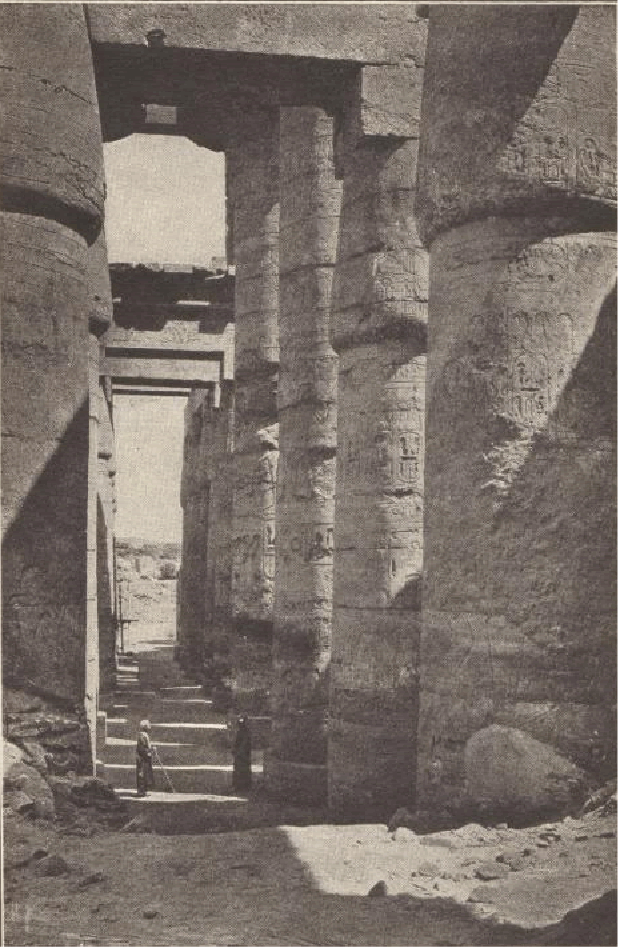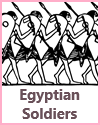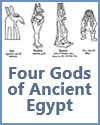| Great Hall at Karnak |
|---|
| www.studenthandouts.com ↣ World History ↣ Ancient Egypt ↣ Ancient Egypt Maps & Pictures |
|
Aisle of the Great Hall of Karnak, Egypt: Note the lack of large, open spaces in Egyptian architecture. Without the technology to build proper arches (which would be done effectively by the Romans), ancient architecture relied on columns. Large heavy columns for supporting roofs left little open interior space. Click here to enlarge this image.
The Great Hall of Karnak, also known as the Hypostyle Hall, is one of the most impressive architectural achievements of ancient Egypt and is located within the Karnak Temple complex in Luxor, Egypt.  Purpose: The Great Hall was an essential part of the larger Karnak Temple complex, which was dedicated to the worship of the god Amun, who was one of the principal deities in the Egyptian pantheon. It served as a place for religious rituals, ceremonies, and festivals.
Purpose: The Great Hall was an essential part of the larger Karnak Temple complex, which was dedicated to the worship of the god Amun, who was one of the principal deities in the Egyptian pantheon. It served as a place for religious rituals, ceremonies, and festivals. Architecture: The most remarkable feature of the Great Hall is its forest of massive stone columns. It consists of 134 massive sandstone columns arranged in a grid pattern. These columns are massive, with some reaching over 21 meters (70 feet) in height and weighing several tons. The columns support the massive stone roof and the ceiling. Hieroglyphics and Reliefs: The columns and walls of the Great Hall are covered with intricate hieroglyphic inscriptions and reliefs. These inscriptions detail various historical events, religious texts, and the names and achievements of the pharaohs who contributed to the construction and renovation of the temple. Central Aisle: The Great Hall is divided into a central aisle flanked by rows of columns on each side. The central aisle was wider than the others and allowed for processions and ceremonies to take place. Courtyards: The Great Hall connects to several open courtyards, halls, and sanctuaries within the Karnak Temple complex. It is part of a larger system of temples, pylons, and structures that make up the temple precinct. Function: The Great Hall served as the focal point of religious activities, including offerings, processions, and rituals dedicated to Amun and other deities. It was a place of worship and reverence for the ancient Egyptians. Construction: The construction of the Great Hall began during the Middle Kingdom (c. 2000 BCE) and continued throughout the New Kingdom (c. 1550-1070 BCE). It was expanded and renovated by several pharaohs, including Seti I, Ramesses II, and Merenptah, among others. Modern Significance: The Great Hall is a testament to the architectural and engineering prowess of the ancient Egyptians. It is also a significant historical and archaeological site that provides valuable insights into ancient Egyptian religion, art, and culture. Today, the Great Hall at Karnak remains one of the most well-preserved and awe-inspiring structures in Egypt. It is a popular destination for tourists and scholars interested in ancient Egyptian history and architecture. The monumental columns and impressive hieroglyphic inscriptions continue to captivate visitors and serve as a reminder of the grandeur of ancient Egyptian civilization. |
 |  |  |  |  |  |
| Ancient Egypt Books and Films | Ancient Egypt Outlines and PowerPoints |
| Ancient Egypt Maps and Pictures | Ancient Egypt Study Games |
| Ancient Egypt Miscellany | Ancient Egypt Worksheets |
| www.studenthandouts.com ↣ World History ↣ Ancient Egypt ↣ Ancient Egypt Maps & Pictures |








